Comparing length and measuring are just a few concepts in what needs to be taught in preschool measurement activities. Partner Pieces not only builds their sense of measurement by the use of math manipulatives, but it also introduces preschoolers to the concepts of measurement in their environment.
Plus, this preschool math activity is nearly no prep, which is always an added bonus!
Easy Activities for Preschoolers That Teach Measuring Skills
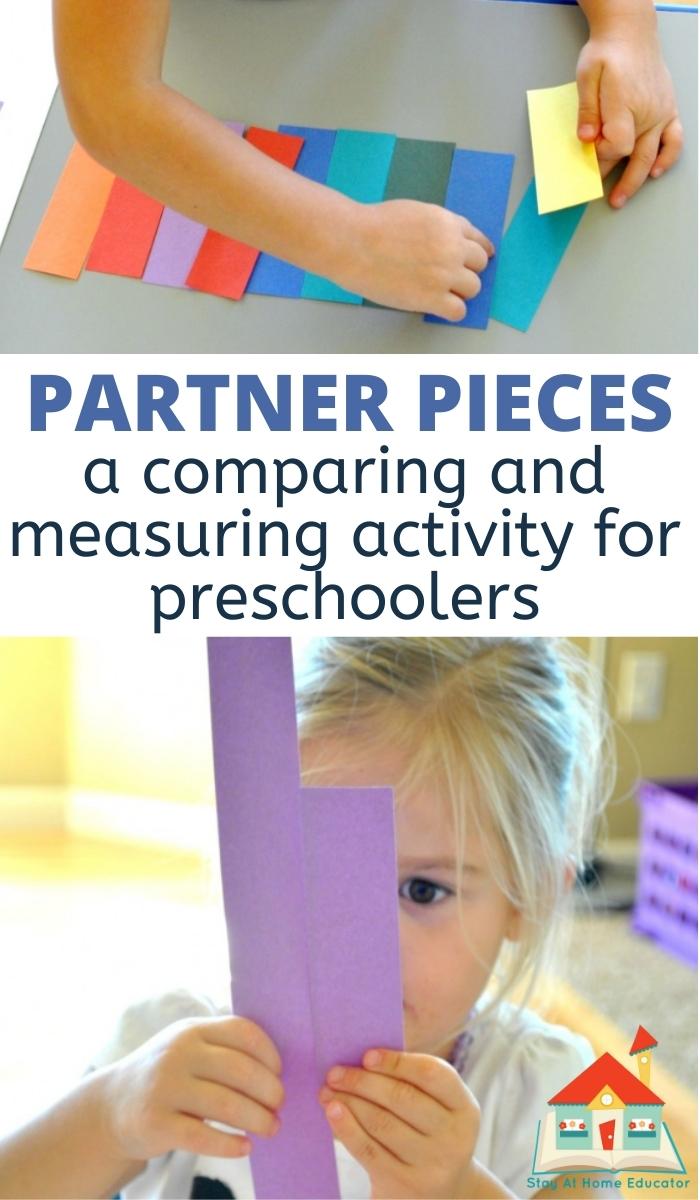
Young children not only love math, but they are naturally very good at it. Ranging from counting and sorting to manipulating shapes and graphing, preschoolers and kindergartners especially seem to be wired like little mathematicians, and I love to refer to them as such.
Luckily for them, math is all around them in their natural world.
One math concept that preschoolers can naturally find in their small worlds is comparing objects, in this case, comparing units and measuring length.
What kind of measuring activities are appropriate for preschoolers?
Before we dive into this activity, it’s important to note that when preschoolers practice measuring, they are not using standard units of measurement. While playing with a tape measure is fun and sometimes helpful, standard measurement activities are not appropriate for preschoolers.
In preschool, we focus on the following skills in measurement:
- measuring height, length, and weight in non-standard units
- recognizing quantities that are more and less
- identify most and least in quantities and volume
- identify big, medium, and small, as well as the terms bigger and smaller
- ordering up to 5 objects by size in both ascending and descending order
Related Reading
Partner Pieces – a Measurement Activity for Toddlers, Preschoolers, and Kindergarteners
You read that correctly. This simple activity can easily be adjusted for multiple age groups and can be used to differentiate math instruction in your classroom.
Materials
- 2 sheets construction paper in rainbow colors (12 sheets total)
- paper cutter
The Set Up
To set up this activity, cut strips of construction paper one and a half inches wide. I used a rainbow of colors to end up with several strips per piece of paper.
Then, take one set of strips and cut it down by one and a half inches. Do the same with a second set of strips, and continue until all the strips have been cut down one and a half inches shorter than the last, like the picture below.
The idea is to have two strips of the same size for each color.
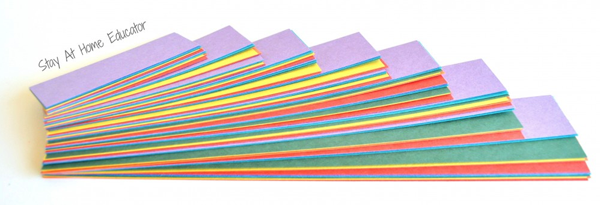
The above is a recommendation, not an exact science. It really doesn’t matter how you cut down the construction paper, as long as each piece has a match in both color and size.
Once all the strips have been cut to size, they can be laminated for added durability. Or, you can just reuse the strips of paper for a scissor cutting activity like this one.
Books We Read
The following are some picture books that pair nicely in a math unit about measurement.
How to Play Partner Pieces with Toddlers
Even toddlers can learn basic measuring skills.
Toddlers first begin by making matches. For this, you’ll want to eliminate quite a few of the cut pieces so as not to overwhelm the toddlers. Stick with small, medium, and large pieces, making sure each piece is distinctly different in length from the next size.
Now, invite your toddler to select a strip of paper and find the match.
You toddler might first find the matching color. This is a great start. Then ask, “That’s the same color. Can you find the same length? The same size?”
Help your toddler work through the process by setting up possible matches and deciding together if they work or not.
The Partner Pieces Activity for Preschoolers
I placed all the construction paper strips on a sheet of white poster board. This was to help my preschoolers define their shared materials from their workspace.
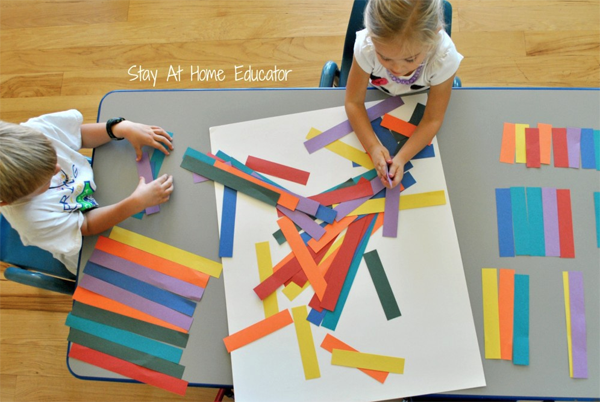
Preschoolers will attack this measuring activity in multiple ways.
- sorting by color
- sorting by length
- piling the pieces of equal length
- using one piece and comparing it to multiple pieces, even after a match has been found
All these approaches are important to the preschooler’s process of learning. And they are important to allow all these process in comparing and measuring activities for preschoolers.
The most important thing you can do here is to ask your preschoolers to talk about what they are doing and why. I have listed a few question prompts later in this post.
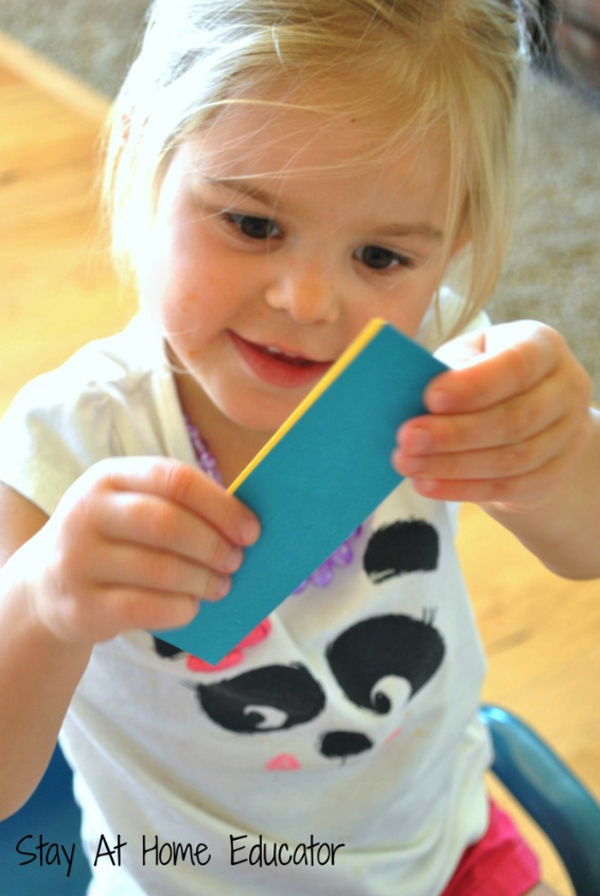
And she quickly set about lining up all the matching lengths in her work space on the table. Instead of just looking for individual matching sets, this choose to sort through all the strips in an effort to find as many of the same matching length as possible.
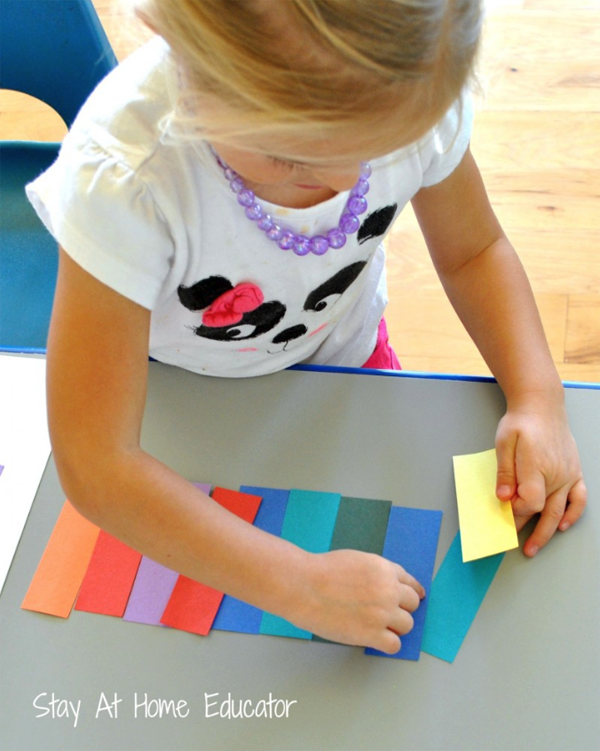
She continued this method of comparing and sorting throughout the entire activity.
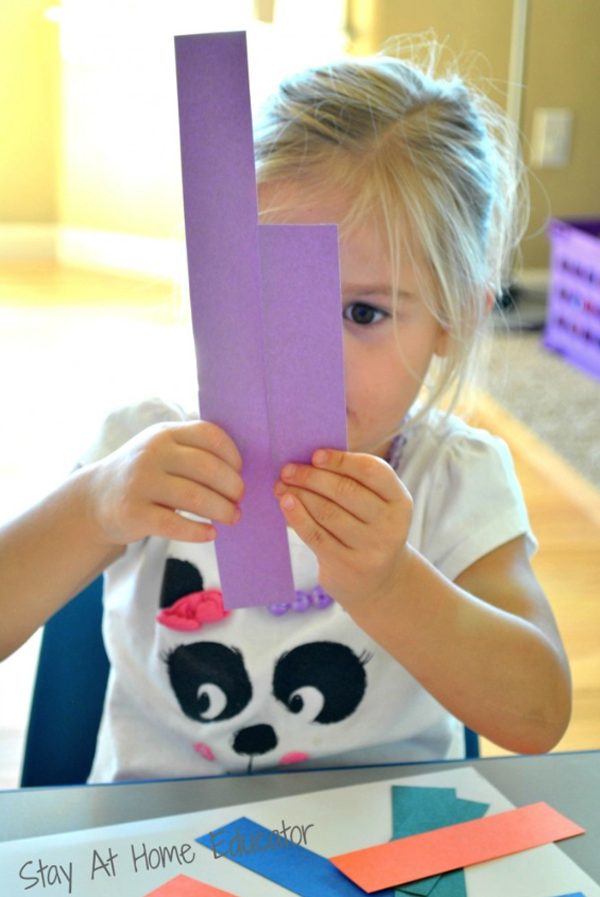
Here she compares the length of two strips of the same color. She ends up discarding one strip and placing the other in a pile of equal sized strips.
How to Teach Measuring Concepts with This Activity
During our partner pieces activity, I had plenty of opportunity to facilitate some mathematical discussion, which is critical to teaching kids how to think like mathematically.
The following are a few questions to consider.
- Can you find the matching length?
- Can you find the matching color and length?
- Do those pieces match?
- How do you know those two pieces match?
- Which piece is longer/shorter?
- What do we call partner pieces that match in length? (same length)
- How many pieces can match?
- How do you know they match?
- What happens if one of longer than the other?
The most valuable thing you can do when initiating mathematical discussions is allowing your child to answer at length and allow them time for self correction. This promotes mathematical reasoning.
Eventually, the preschoolers ended up with a collection of partner pieces that were arranged by groups of length.
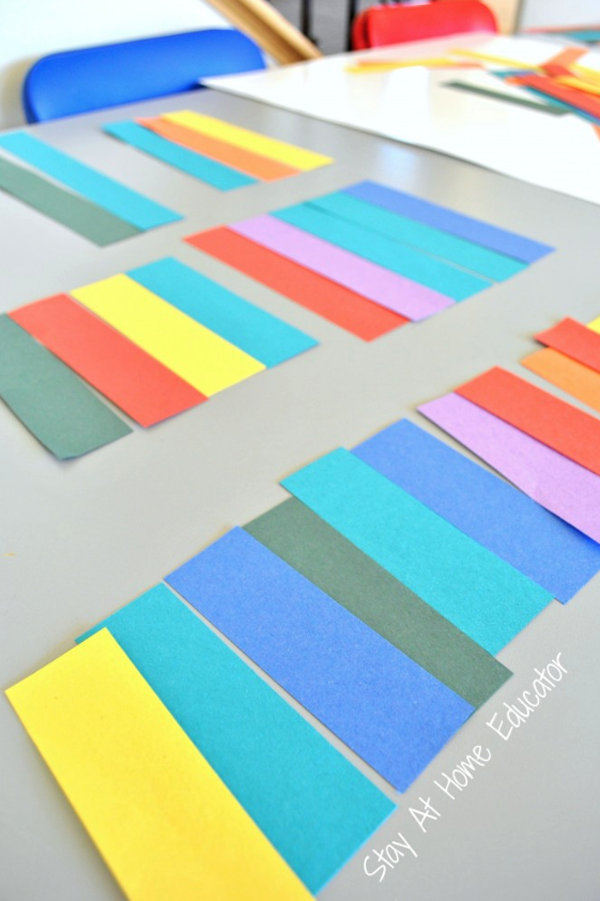
Extending the Activity for Kindergarteners
Partner Pieces can easily be expanded to teach kindergarten students how to measure, too. Try some of these ideas. You might also have an older preschooler who can do these.
- Select a strip of paper and find something in the classroom of equal length, such as the length of a pencil.
- Or find something that is shorter.
- Or longer.
- Use non-standard units of length, such as these measurement worms, to identify how long the different pieces are.
- Sequence a handful of pieces from longest to shortest and then glue them onto a blank sheet of construction paper.
Favorite Measurement Tools for Early Childhood Education
Here are some of my favorite products and resources for teaching young children about measurement.

I’m Sarah, an educator turned stay-at-home-mama of five! I’m the owner and creator of Stay At Home Educator, a website about intentional teaching and purposeful learning in the early childhood years. I’ve taught a range of levels, from preschool to college and a little bit of everything in between. Right now my focus is teaching my children and running a preschool from my home. Credentials include: Bachelors in Art, Masters in Curriculum and Instruction.
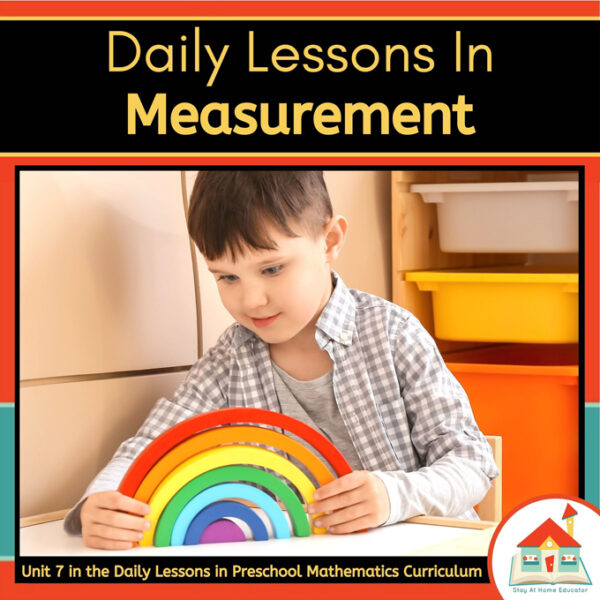

[…] different colors, at least, so that there is a complete set for each color. This will add to the measurement and color challenge you’ll read about […]